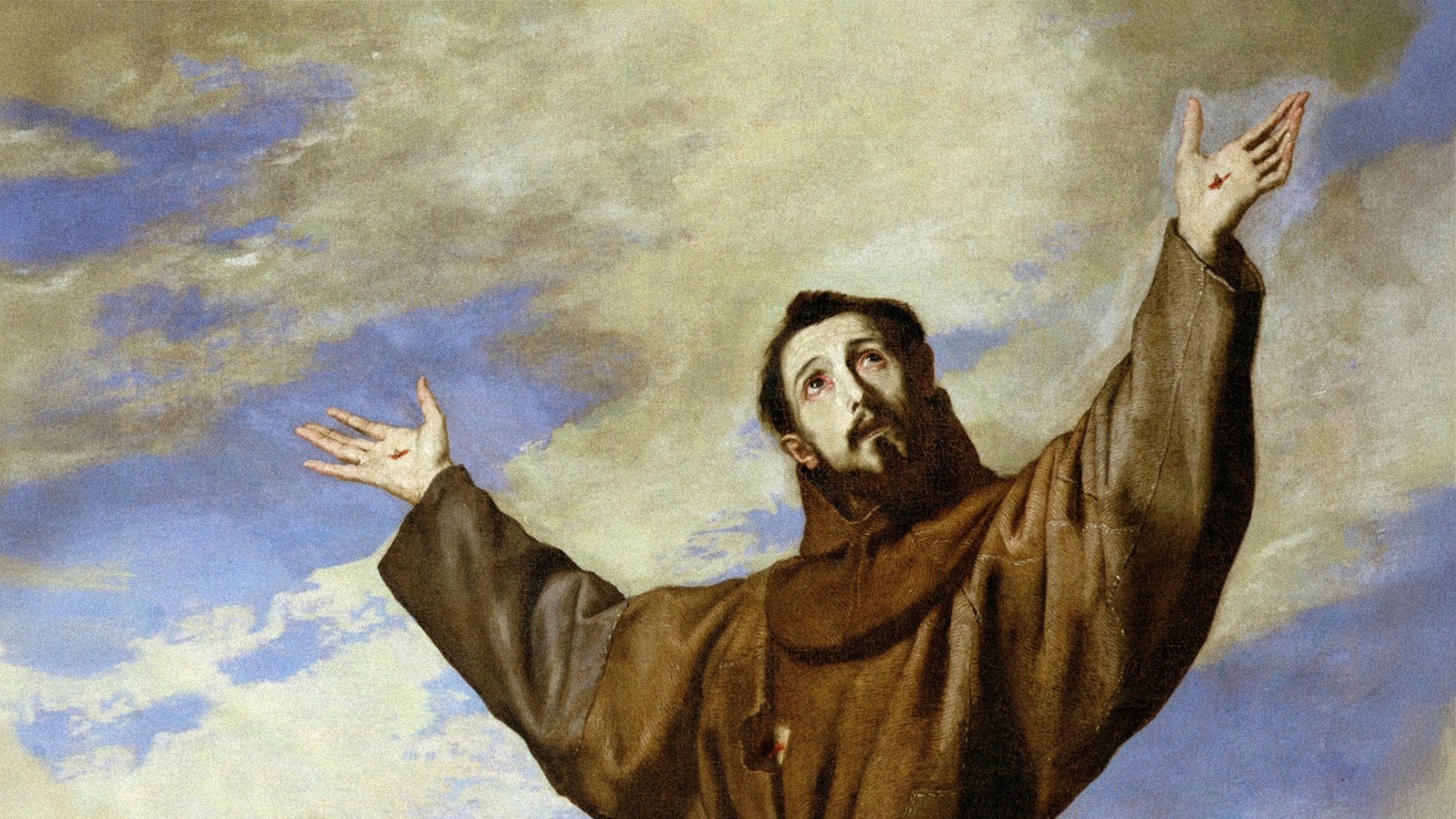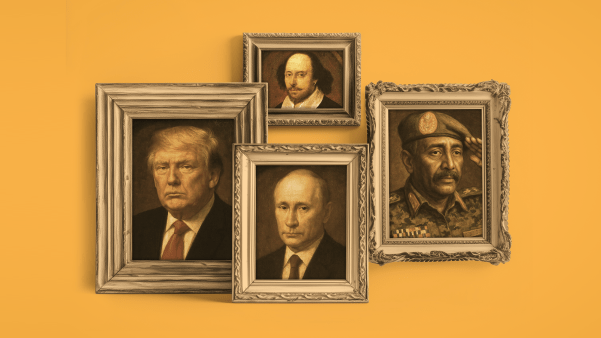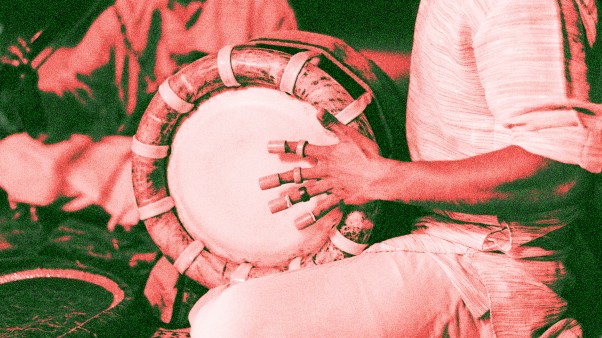Late in the fourth century, a group of seven monks from a Jerusalem monastery went on a sightseeing trip to Egypt. But this was no ordinary vacation.
Traversing mountainous crags and rocky hillsides, they visited hermits, ascetics, and monastic groups. They went with the hope of seeing miraculous and abnormal occurrences, and they found even more than they were looking for. Along the way, they also evaded more than a few robbers, had some sketchy meals, and faced crocodile attacks, reminding us that road-tripping has always been an extreme sport. We know about their trip because one of them (whose name we do not know) wrote a book in Greek about the voyage after returning home. Then their abbot, one Rufinus of Aquileia, diligently translated this book into Latin, and it became a bestseller.
The hermits documented in this travelogue range from strange to stranger to really out there. They loved God deeply—no one doubts that. They were also radical misfits, decidedly incapable of living in regular society, holding down “normal” jobs, and worshiping in “normal” churches. But then, by the time Rufinus’s monks were traipsing around the Egyptian countryside to see a more feral version of themselves in the (literal) wild, radical misfits already enjoyed an established presence in the church, dating back to the locust-eating and camelhair-shirt-wearing John the Baptist.
Extraordinary believers—and our fascination with them—have always been a part of the story of Christianity. But one radical misfit in particular, Francis of Assisi, seems to loom larger—and provoke greater fascination—than any other. His life story, shrouded in legend, continues to inspire many unlikely groups, including the 1960s hippies, a group of more secular radical misfits who sometimes claimed Francis as their patron saint.
The Christian misfits did not lead comfortable lives. For this reason, among others, they tended to make others uncomfortable as well. Maybe that is part of their charisma, suggests Volker Leppin in his biography Francis of Assisi: The Life of a Restless Saint, newly translated after first being published in German.
For a historian like Leppin, a professor at Yale Divinity School, Francis is a toothsome puzzle, an enticing Rubik’s cube with no perfect solution. There are so many sources to draw from but so little certain knowledge. Questions exist even about his name. We know he was born to a wealthy merchant family in the latter decades of the 12th century. We know he turned his back on his family and started caring for the sick and the poor in his hometown and beyond. At a time and place that generally considered poor people invisible, he became famous for his poverty, even acquiring the nickname poverello (Italian for “poor man”) in his own lifetime. He was a poor celebrity—an incongruous concept, especially in the Middle Ages.
Francis wished for something akin to a monastic existence, yet he refused to join an established order. Eventually, he founded his own brotherhood of mendicant monks, who took vows of poverty and depended on charitable provisions. Although he was a natural leader, he was uncomfortable with leadership—even to the point of backing away from leading the Franciscan order he had inspired.
While marching time and again to the beat of his own drum, he managed to remain at peace with the Catholic church of his day. Over time, his order became incredibly popular. His influence on one follower, Clare of Assisi, led her to create a similar mendicant order for women. He met such prominent and powerful individuals as Pope Innocent III and Sultan al-Malik al-Kamil.
Stories like these lend themselves to factual verification. But other claims are more miraculous in character. Some sources note that he experienced stigmata—the marks of Christ’s wounds—in his own body later in life. Perhaps, living so much like Christ, he could not help taking on certain physical signifiers of saintliness.
But at this point, facts begin slipping away, and theories sneak in instead. A truly serious modern, secular historian might just get a little itchy under the collar right about now. Stigmata? Really? What are we going to talk about next? Saints who flew?
Still, the factual stuff alone already presents an impressive body of knowledge. Surely it can yield a coherent biography without compelling the biographer to sift through speculation. Not so fast, Leppin warns. These punctuated elements don’t get us to the real Francis, he argues, just as a laundry list of dates, relationships, friendships, and basic professional achievements can’t sum up the significance of any individual. People are complicated, and people in love with God are perhaps more so than most.
Why was Francis the way that he was? And was he really the way any of the sources portray him, including the most challenging and contradictory source of all—his own writings? The historical and the hagiographical mingle seamlessly, tormenting anyone who would separate fact from fiction. But then, people are never just a collection of facts. Nor are their personalities fixed through all of life.
This seems especially poignant in the case of someone like Francis, so much larger than life. Just who was he emotionally and spiritually? This question, ultimately impossible to answer adequately, fascinates and haunts Leppin in this biography. He admits that the book took shape as something other than a straightforward historical inquiry. “It is a biography,” he writes, “and yet at the same time it is a book about the difficulties of writing a biography, and specifically a biography of Francis of Assisi.”
Given the difficulties involved, why undertake such a project? Why, in other words, is it important to capture the true core, heart, and spirit of this particular man who died over a thousand years ago?
As I read through Leppin’s own elegant wrestlings, I was reminded of a much less elegant lecture I used to give on Francis and Clare when I taught an introductory world history course at a state university in the Bible Belt. The students, wide-eyed, had a hard time understanding most of these saints’ life choices. Clare’s desire for a “celestial spouse,” in particular, usually caused giggles and raised eyebrows. They wondered, Who talks about God this way?
But a commitment to serve the sick and the poor? This they could understand. Such are the saints we all still desire today—those who give their lives for others in our self-centered age. Every person wants to be seen and known more deeply, and in the story of Francis my modern students found someone who understood this and cared enough to treat others accordingly.
The age of radical misfits in the church is not over, of course. There is a reason modern saints, like Mother Teresa or Dorothy Day, still fascinate us. In their countercultural willingness to love and serve others above themselves, they offer 21st-century versions of Francis and his ilk. In the process, they remind us that self-sacrificial living is just as shocking and abnormal today as it always has been.
Here, it seems, lies the difference between Francis and the other monastics of his age: Instead of removing himself from the world into the safety of a monastery, Francis always placed himself in positions of utmost discomfort, especially of the physical sort. He understood, as Leppin writes, that “it was in vain to flee the world if there was no direction in which to flee. Of course he was profoundly shaped by the circumstances of his external life, being sent into the world to all people and to all creatures. But the power for this was rooted in his intensive relationship with God, Christ, the angels, and the saints.” We cannot, it seems, understand Francis without understanding the rich spiritual life that drove all his actions and decisions.
Leppin lays out his cards up front: Every biographer of Francis must wrestle with the hagiographical tradition alongside more typical historical facts and methods. When it comes to understanding a saint, a historian can only go so far. Even if we knew all the facts about Francis, they would not make him less complicated—perhaps only more.
This is appropriate: Studying saints has never been a strictly historical enterprise. It has always involved acknowledging the significance of the spiritual realities as they bear upon the material world. Rufinus’s pilgrim monks knew this, it seems, when they set out to investigate strange hermits and holy men. And Leppin, toward the end of this book, quietly comes to a similar conclusion, siding to some degree with the hagiographical Francis. In being open to stories and legends that can’t be verified with absolute certainty, Leppin reminds us that the church’s saints still retain a powerful grip on our hearts and minds.
This is especially true for believers, and even for evangelicals in the post-Reformation age. Unlike Catholics, of course, evangelicals do not pray to saints, incorporate them into their worship, or involve them closely in their communal and personal spiritual lives. Still, the saints’ love for God intrigues evangelicals too, and their disruptive behavior can still achieve that most revolutionary disruption of all: bringing sinners to know God.
As Leppin notes of his subject, “In the distance we meet a man who was seeking but never found his purpose in life fulfilled. And a man who simply will not let us grasp him either.” But somehow Francis has pointed so many others to God over the past millennium, and that is what true sainthood is really about.
Nadya Williams is the author of Cultural Christians in the Early Church and Mothers, Children, and the Body Politic: Ancient Christianity and the Recovery of Human Dignity.













